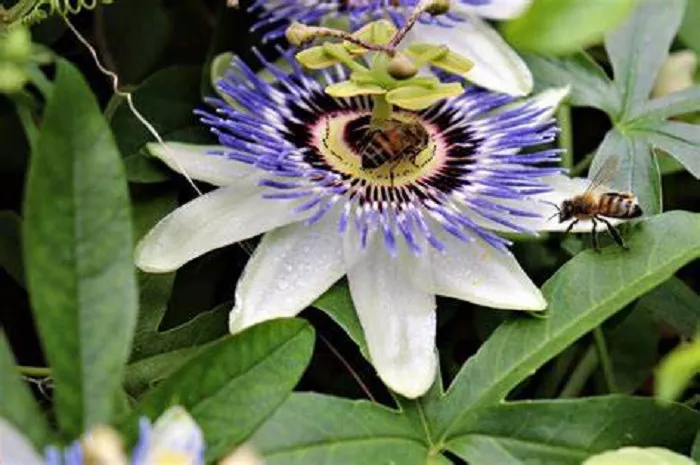Passion flowers are not only stunning additions to any garden but also fascinating in their reproductive processes. Pollination is crucial for their fruit production and the propagation of these beautiful plants. Whether you are a seasoned gardener or a novice enthusiast, understanding how to pollinate passion flowers can enhance your gardening experience and ensure a bountiful harvest of passion fruits.
Understanding Passion Flower Pollination
Passion flowers, scientifically known as Passiflora, are unique in their pollination requirements. They rely on specific pollinators to transfer pollen from the male anthers to the female stigma. In the wild, these plants are often pollinated by bees, butterflies, and even hummingbirds. However, in a garden setting, especially if you have a limited number of pollinators, manual pollination can significantly increase fruit set.
The Importance of Pollinators
Pollinators play a vital role in the life cycle of passion flowers. Bees, with their hairy bodies, are particularly effective at transferring pollen. Butterflies, attracted by the vibrant colors of the flowers, also contribute to pollination. If you notice a lack of these natural pollinators in your garden, it might be time to lend a helping hand.
Identifying the Right Time for Pollination
Timing is crucial when it comes to pollinating passion flowers. The flowers typically open in the morning and remain receptive to pollen for a few hours. Observing your plants closely will help you determine the best time to intervene. Early morning, when the flowers are fresh and the pollen is most viable, is generally the optimal time for manual pollination.
Techniques for Manual Pollination
Manual pollination is a straightforward process that can be done with simple tools. Here are some techniques to ensure successful pollination:
Using a Small Brush
A soft, small brush is an excellent tool for transferring pollen. Gently brush the anthers to collect pollen and then carefully transfer it to the stigma. This method mimics the action of a bee and ensures that pollen is effectively deposited.
Employing Tweezers for Precision
For those who prefer a more precise approach, tweezers can be used to carefully pick up pollen and place it on the stigma. This method is particularly useful for smaller flowers or when working with delicate plants.
Hand Pollination with Cotton Swabs
Cotton swabs are another effective tool for hand pollination. Dip the swab into the pollen and then gently touch it to the stigma. This method is quick and easy, making it a popular choice among gardeners.
Creating a Pollinator-Friendly Environment
While manual pollination is a reliable method, encouraging natural pollinators to visit your garden can also enhance the pollination process. Here are some tips to create a pollinator-friendly environment:
Planting Companion Plants
Companion plants that attract bees, butterflies, and other pollinators can significantly boost the pollination of your passion flowers. Plants like lavender, marigolds, and zinnias are excellent choices. Their vibrant colors and fragrances will draw pollinators to your garden.
Providing Shelter and Water
Pollinators need more than just food. Providing shelter and water sources can encourage them to stay in your garden. Small bee houses or butterfly resting spots can be easily constructed and placed around your garden. A shallow dish with water and stones for perching can also be a lifesaver for thirsty pollinators.
Avoiding Pesticides
Chemical pesticides can be harmful to pollinators. Opt for organic or natural pest control methods to protect these essential creatures. Integrated pest management (IPM) techniques, such as using beneficial insects or homemade remedies, can effectively control pests without harming pollinators.
Monitoring and Maintaining Your Passion Flowers
Regular monitoring of your passion flowers is essential to ensure successful pollination and fruit production. Here are some tips to keep your plants healthy and productive:
Observing Flower Development
Keep a close eye on the development of your passion flowers. Look for signs of successful pollination, such as the withering of petals and the swelling of the ovary. This indicates that the flower has been fertilized and is beginning to produce fruit.
Pruning for Better Airflow
Proper pruning can improve airflow and reduce the risk of fungal diseases. Remove any dead or overcrowded branches to ensure that your plants receive adequate sunlight and air circulation. This will also make it easier for pollinators to access the flowers.
Fertilizing for Healthy Growth
Regular fertilization is crucial for the health of your passion flowers. Use a balanced fertilizer to provide essential nutrients. Avoid over-fertilizing, as this can lead to excessive leaf growth at the expense of flower and fruit production.
Conclusion
Pollinating passion flowers can be a rewarding experience for any gardener. Whether through manual pollination or by creating a pollinator-friendly environment, ensuring the successful fertilization of these beautiful plants will lead to a bountiful harvest of passion fruits. With a little patience and attention, you can enjoy the beauty and productivity of passion flowers in your garden.


